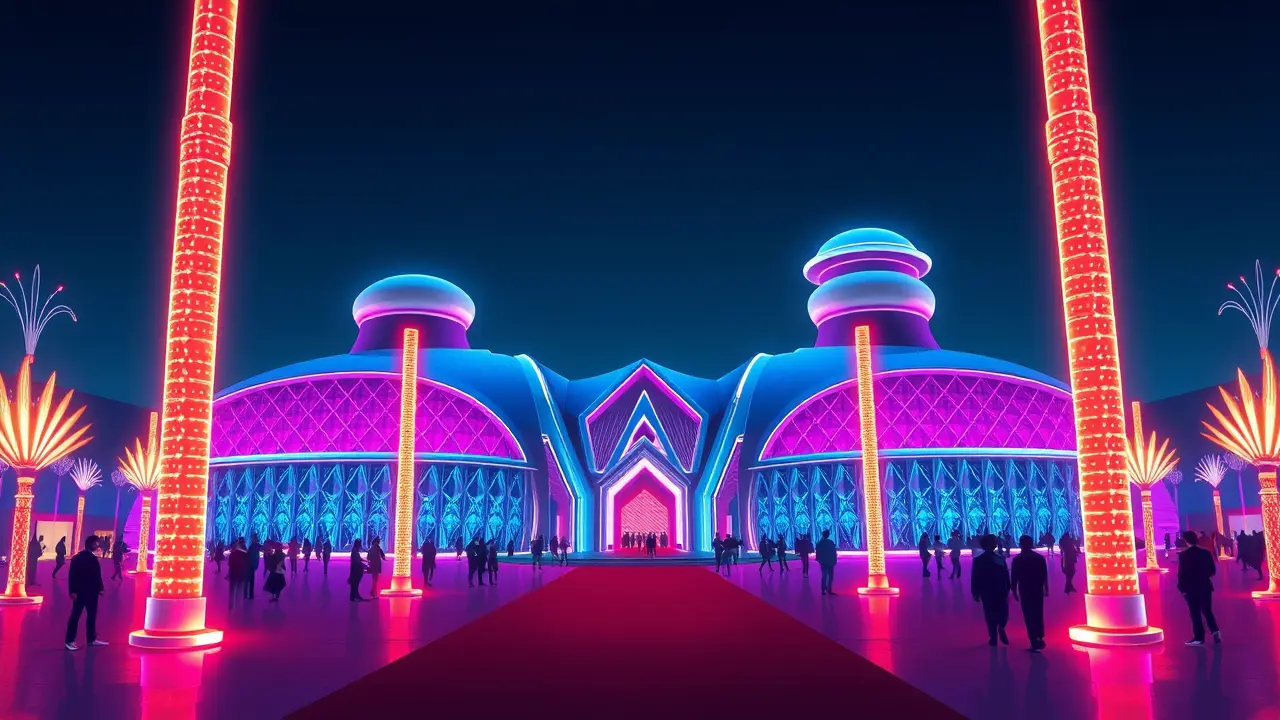
Entertainmenttheatre & artsArt Exhibitions
Qatar's Growing Art Scene with New Exhibitions and Basel.
SA
Sarah Lee
21 hours ago7 min read
Qatar is making a monumental play for the global cultural spotlight, and the art world is watching with a mix of awe and anticipation. The Gulf state, long known for its strategic acquisitions of blue-chip masterpieces, is now architecting a full-spectrum cultural ecosystem with the launch of a major new quadrennial, a powerful presence at the Venice Biennale, and the seismic coup of welcoming an Art Basel franchise.This isn't just about hanging art on walls; it's a meticulously curated national project, a soft power gambit writ large on the canvas of international relations, mirroring the way a visionary DAO might build a new digital nation from the ground up. Think of it as a massive, IRL generative art project, where the code is capital and the output is global influence.The burning question, however, is whether the market infrastructure—the galleries, the collectors, the local scene beyond the royal family’s shopping list—can organically flourish to sustain this ambitious vision. Can you bootstrap an art market with the same top-down precision you’d use to launch a token? The Qatari strategy has been one of audacious patronage, with the Qatar Museums Authority, under the leadership of Sheikha Al Mayassa bint Hamad bin Khalifa Al Thani, operating like a crypto whale in a nascent market, acquiring works by Hirst, Koons, and Rothko for sums that reverberate through auction houses.This has established Doha as a museum destination, a Louvre Abu Dhabi-level counterpart, but a market requires a vibrant, self-sustaining ecosystem of commercial galleries, a thriving class of local collectors beyond the institutional, and a constant churn of buying and selling that fuels artists' careers. The introduction of Art Basel Qatar is the critical test, the mainnet launch after years of testnet development.It will act as a forced accelerator, importing the world’s most prestigious dealers and a global elite of collectors to Doha, but the real challenge is converting that imported energy into domestic momentum. Will the visiting collectors who fly in on private jets also invest in the emerging Qatari and Middle Eastern artists shown by local galleries? Or will the event exist as a brilliant, temporary oasis, a glitzy metaverse event that pops up for a week and then vanishes, leaving the local scene to its own devices? The parallel to the NFT space is striking; for every successful PFP project that builds a lasting community, there are a hundred that flash and fade.Qatar’s success will hinge on its ability to build that community, to foster homegrown talent that resonates globally, and to create a regulatory and financial environment that makes it easy for galleries to set up shop and for transactions to flow as smoothly as a well-designed smart contract. The new quadrennial provides a crucial platform for this local talent, a recurring showcase that can build narrative and legacy, much like the way generative art platforms like Art Blocks create series with provenance and history.The stakes are astronomically high. If Qatar succeeds, it will rewrite the map of the global art world, creating a new hub that bridges East and West, tradition and the avant-garde.If it stumbles, it risks being seen as a magnificent patron but not a true market—a place where art is collected with unparalleled ambition, but not where it is born, traded, and lived. The world is watching to see if this Gulf state can execute one of the most ambitious cultural smart contracts ever written.
#Art Basel
#Qatar
#art market
#quadrennial
#Venice Biennale
#featured
Stay Informed. Act Smarter.
Get weekly highlights, major headlines, and expert insights — then put your knowledge to work in our live prediction markets.
© 2025 Outpoll Service LTD. All rights reserved.